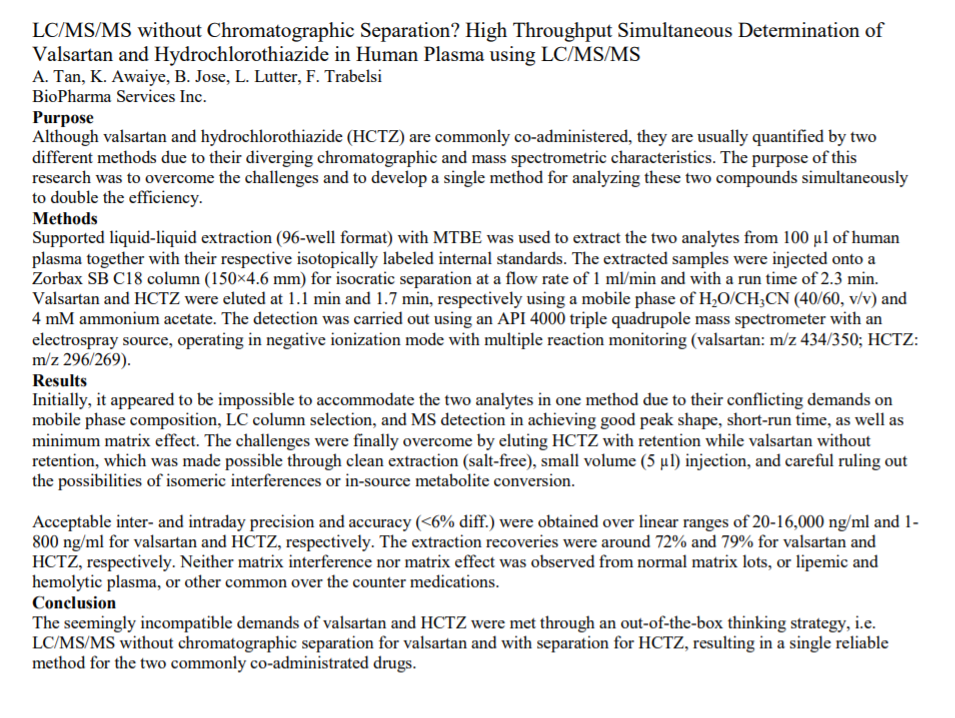LC/MS/MS without Chromatographic Separation? High Throughput Simultaneous Determination of Valsartan and Hydrochlorothiazide
PRESENTED TO: BioPharma Services Inc.
PRESENTED BY: A. Tan, K. Awaiye, B. Jose, L. Lutter, F. Trabelsi
PURPOSE
Although valsartan and hydrochlorothiazide (HCTZ) are commonly co-administered, they are usually quantified by two different methods due to their diverging chromatographic and mass spectrometric characteristics. The purpose of this research was to overcome the challenges and to develop a single method for analyzing these two compounds simultaneously to double the efficiency.
METHODS
Supported liquid-liquid extraction (96-well format) with MTBE was used to extract the two analytes from 100 µl of human plasma together with their respective isotopically labeled internal standards. The extracted samples were injected onto a Zorbax SB C18 column (150×4.6 mm) for isocratic separation at a flow rate of 1 ml/min and with a run time of 2.3 min.
Valsartan and HCTZ were eluted at 1.1 min and 1.7 min, respectively using a mobile phase of H2O/CH3CN (40/60, v/v) and 4 mM ammonium acetate. The detection was carried out using an API 4000 triple quadrupole mass spectrometer with an electrospray source, operating in negative ionization mode with multiple reaction monitoring (valsartan: m/z 434/350; HCTZ: m/z 296/269).
RESULTS
Initially, it appeared to be impossible to accommodate the two analytes in one method due to their conflicting demands on mobile phase composition, LC column selection, and MS detection in achieving good peak shape, short-run time, as well as minimum matrix effect. The challenges were finally overcome by eluting HCTZ with retention while valsartan without retention, which was made possible through clean extraction (salt-free), small volume (5 µl) injection, and careful ruling out the possibilities of isomeric interferences or in-source metabolite conversion.
Acceptable inter- and intraday precision and accuracy (<6% diff.) were obtained over linear ranges of 20-16,000 ng/ml and 1-800 ng/ml for valsartan and HCTZ, respectively. The extraction recoveries were around 72% and 79% for valsartan and HCTZ, respectively. Neither matrix interference nor matrix effect was observed from normal matrix lots, or lipemic and hemolytic plasma, or other common over the counter medications.




